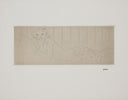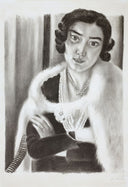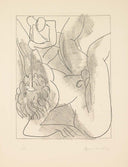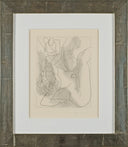About the Artist
Henri Matisse (1869–1954) is celebrated as one of the most important artists of the twentieth century, whose innovations reshaped the possibilities of modern art. A pioneering figure in Fauvism, Matisse used bold color, fluid line, and a radical approach to form that established him as a counterpart to Picasso and an enduring influence on generations of artists. His work across painting, sculpture, drawing, and printmaking demonstrates an unmatched versatility and a lifelong dedication to the pursuit of beauty and clarity.
Matisse’s printmaking, and especially his etchings, reflect a mastery of line that distills his subjects to their most essential forms. Portraits, interiors, and figure studies rendered in etching reveal his ability to create depth and vitality with remarkable economy. These works exemplify his lifelong interest in purity of expression, offering a parallel to the luminosity of his paintings while standing on their own as essential contributions to the graphic arts.
Matisse’s relevance continues to resonate in today’s art world. His simplified forms, daring compositions, and exploration of color and line inform much of contemporary abstraction and design. Exhibitions of his work remain international milestones, and his influence can be traced in painting, printmaking, and even architecture and fashion. Matisse’s art endures as both a cornerstone of modernism and a living presence in contemporary visual culture.










